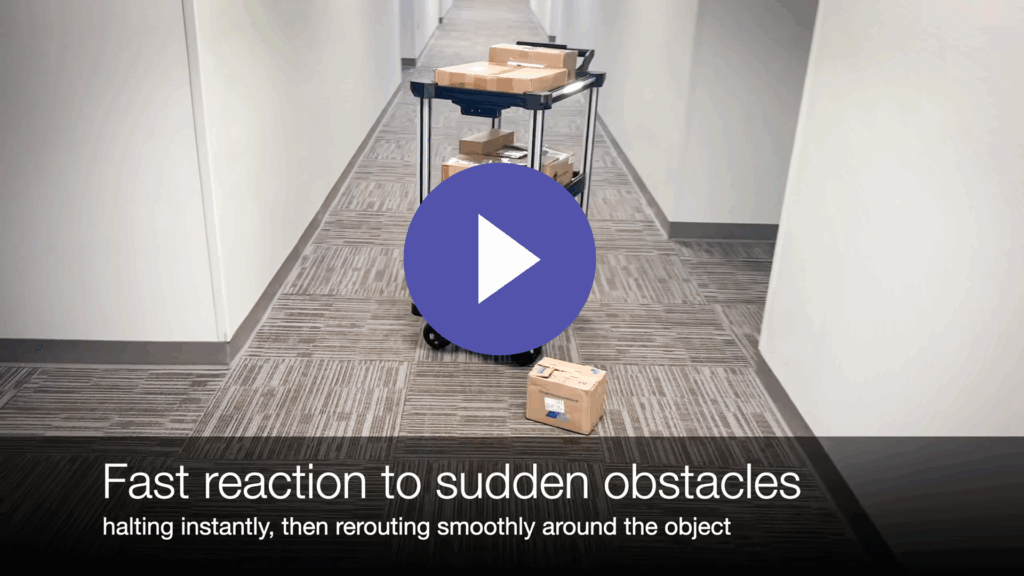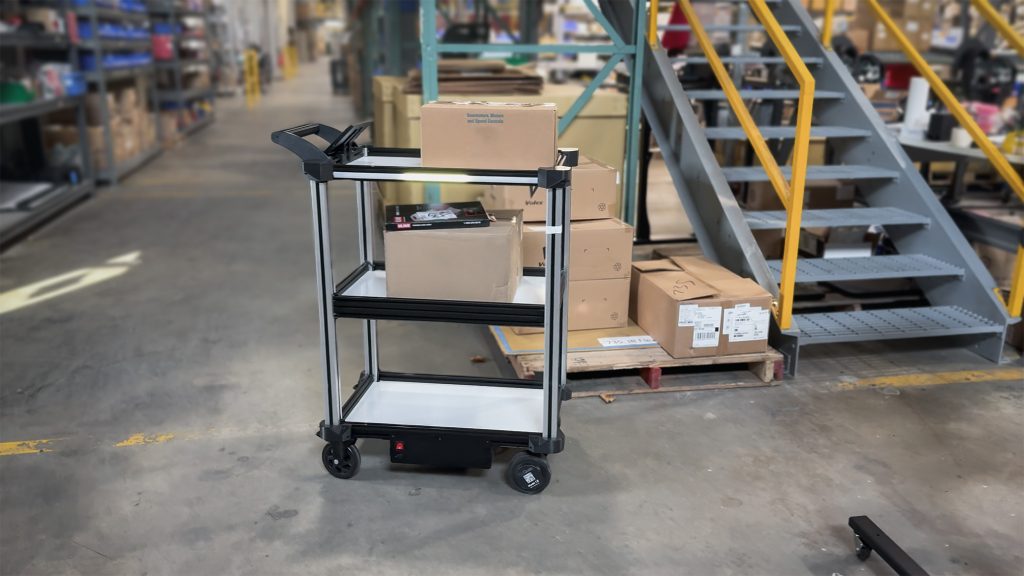Navigating Complex Environments
In modern workplaces, factories, warehouses, hospitals, and offices, robots coexist with people, equipment, and moving vehicles. These environments are never static: a worker might step into an aisle, a pallet could be left out of place, or a cart may suddenly cross a path. For robots designed to move materials or deliver goods, the ability to detect and avoid these unexpected obstacles is what makes them useful partners rather than liabilities.

Why Obstacle Avoidance Matters
Without reliable obstacle detection, indoor robots risk collisions that can cause damage, delays, and safety concerns. More than just stopping short of objects, this AMR movement allows robots to maintain flow and efficiency by rerouting around whatever appears in their path. This is critical for:
- Safety: Protecting people and preventing accidents in busy spaces.
- Efficiency: Reducing downtime caused by stalled robots or blocked routes.
- Adaptability: Ensuring performance even when layouts or conditions change.
How Robots “See” Their World
Obstacle avoidance relies on a mix of sensing and decision-making. Technologies often include:
- LiDAR and cameras that map the surroundings in real time.
- Time-of-flight sensors that measure distance to nearby objects.
- Algorithms that process this information and determine the safest, most efficient alternate path.
The combination of perception and quick response is what allows robots to operate smoothly in unpredictable, human-centered environments.
Beyond Productivity: Building Trust
Reliable obstacle detection doesn’t just improve logistics, it builds confidence. When workers see that a robot can safely navigate around them, they’re more likely to welcome it as part of their daily environment. Trust is a critical factor in the adoption of robotics, and obstacle avoidance plays a central role in that trust.

Looking Ahead
As robotics becomes increasingly integrated into everyday workspaces, obstacle avoidance will continue to evolve. Advances in AMR movement and sensor technology are pushing robots beyond simple detection toward predictive navigation, anticipating movements before they happen. This shift will bring even greater resilience, making indoor delivery systems safer, smoother, and more collaborative than ever before.